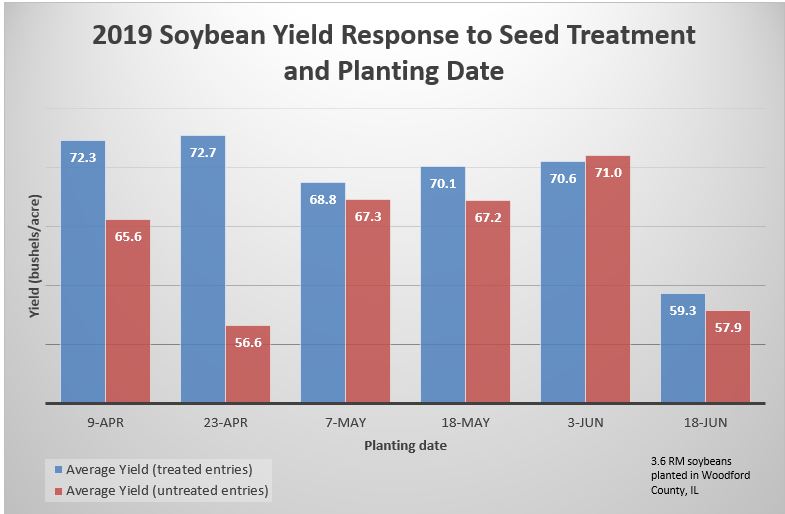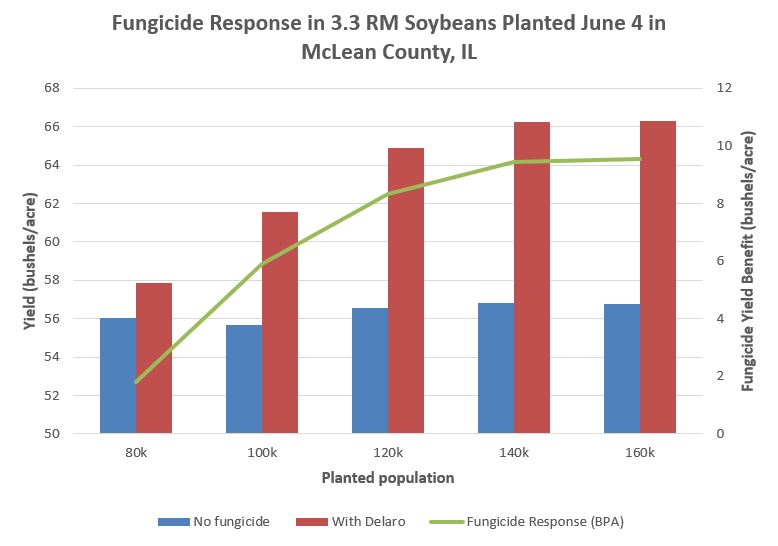ILSOYADVISOR POST
What Can We Learn from 2019?
There’s no doubt that 2019 has been a season that most Illinois soybean producers would like to put in the rearview mirror. However, it will be difficult to forget the challenging spring that led to widespread late planting and record prevent plant acres across the Midwest. Dry and hot conditions in July and early August stressed the crops, which were already at a disadvantage from the excessive rain and delayed planting. Although harvest is finally in full swing, it seems like it has been more of a crawl than a sprint to the end.
In my latest ILSoyAdvisor podcast, I cautioned growers not to make too many decisions for the future based on this (hopefully) anomalous year. However, there are always lessons to be learned, and I will share some results from our Bayer Crop Science Focus site in Woodford County which I believe will be relevant in the future.
Despite the excessive rainfall this spring, we were able to plant soybeans in Woodford County with a variety of seed treatments—beginning April 9 and continuing every 2 weeks through June 18. The advantage of the treatments was highlighted in the earliest planted beans, which took almost a month to emerge from the cold, saturated soils. We tested multiple seed treatments from the Acceleron® Seed Applied Solution platform, which are combined in figure 1. The average yield advantage of the treated seed across planting dates was 4.7 bushels/acre. Note that although the value of treatments was highest in the April planted beans, there was even an advantage in the June 18 planting.
Figure 1: On average, treated entries yielded better than untreated entries.
Another trial, planted in McLean County on June 4, was designed to understand the value of fungicide application in late planted beans. Many growers this year were understandably tempted to forgo additional inputs for what they expected to be a low-yielding crop. The results from this trial illustrate that even in later planted soybeans, there is high potential for a positive return on investment from a timely fungicide application. Soybeans were planted at five populations ranging from 80,000 to 160,000 seeds per acre. We applied 10 oz/acre of Delaro® fungicide to half of the trial on July 30, at the R3 growth stage. No significant disease pressure of any kind was present in the field before or after application.
The results from this trial are interesting. Without fungicide, we observed very little difference in yield across populations. However, the response to fungicide application steadily increased with rising seeding rates. These data clearly indicate that higher levels of management can pay big dividends, even in later planted beans. Additionally, foliar fungicides can benefit plant health and provide a big yield increase, even in the absence of disease.
Figure 2: Yield response to fungicide treatment on 3.3RM soybeans.
Bear in mind that even though the results presented here are consistent with past research and grower experience, they are from single locations. I noted earlier and would like to reiterate that it is important not to focus too strongly on this year when making decisions in the future. However, there is always something to be learned from a challenging situation and the value of protecting the crop was highlighted in this growing season. When the combines are finally parked, let’s all take a deep breath and enjoy time with our families and loved ones while preparing for 2020.







Comments
Add new comment